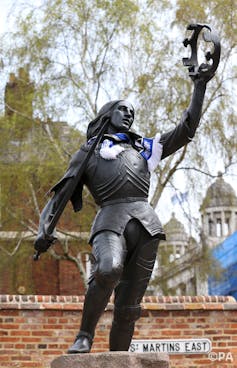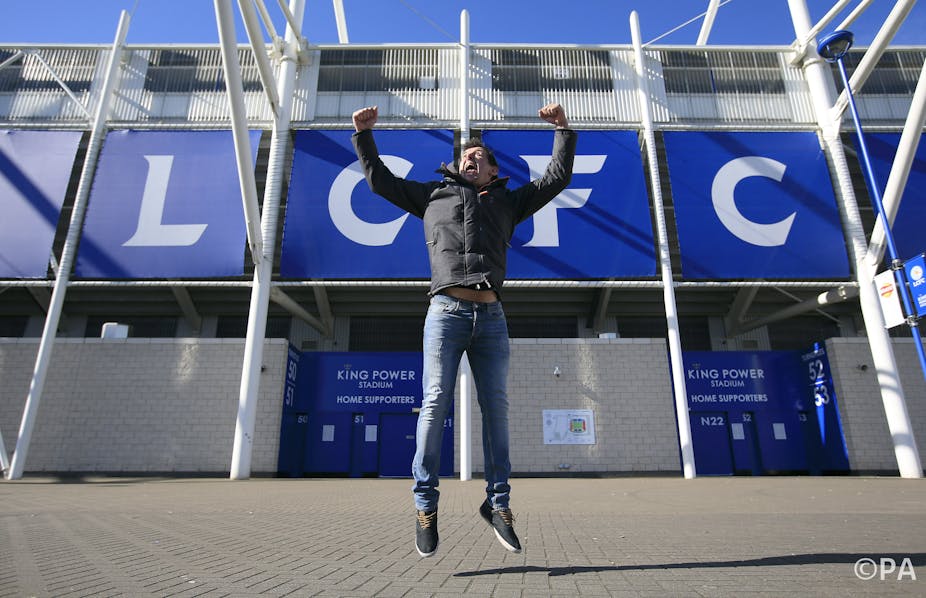It would be surprising if you had not been caught up in the fever surrounding Leicester City’s fairytale triumph in the English Premier League, defying odds of 5,000-1 to win the country’s most prestigious football competition.
But beyond the fact that the city has scored a sporting success, what else do you know about Leicester? You may have read that historians found the grave of the deposed King Richard III under a Leicester car park in 2012. But you’d still just be scratching the surface. Here are five things you need to know about Leicester.
1. It’s pronounced “Lester”
One of the first things a visitor notices about Leicester is that it isn’t obvious how to pronounce the name. “Leicester” is probably derived from an old word for the local river, although no one knows for sure. It is pronounced “Lester” (not “Lie-Chester” or anything similar), but if you want to fit in with the locals you should aim for a rising inflection on the second syllable to produce something on the lines of “Les-Tah”.
Followers of local rock band Kasabian will have noticed the band sporting “Les-Tah” t-shirts, which are currently available at the tourist information office and are an example of how even a local dialect can be marketed.

Another example, which often confuses visitors, is the local pronunciation of “Belvoir” (as in Belvoir Street or Belvoir Castle) as “Beaver”. Although this may seem strange, what is thought of as Standard English is actually an East Midlands dialect. By the late 14th century, the agricultural wealth of the East Midlands meant local merchants traded with London and took the East Midlands dialect with them, acting as a useful bridge between northern and southern dialects and influencing the way Londoners spoke.
2. It’s in the middle of England
Leicester sits in the middle of the county of Leicestershire, which is in the middle of England about 100 miles north of London.

Being in the middle, it has always had good transport links and is accessible by road (the M1 and M69 motorways), rail (an hour by train from London), air (East Midlands Airport), and canal (the Grand Union canal, if you have plenty of time).
Although the population of Leicester is around 330,000 it is too small to be a major city such as Manchester (population 2.5m) or Birmingham (population 1.1m) – yet too big to be a small town; it is somewhere in the middle.
3. It has a diverse population
Leicester has one of the most diverse populations in the country. The 2011 census revealed that less than half of the population are “White British”, while 28% of the population identify themselves as “Asian/British Asian: Indian”.
However, the city’s religious makeup shows a balance between Christians (32%), people with “no religion” (23%), Muslims (19%) and Hindus (15%). The arrival of thousands of Ugandan Asian refugees in the early 1970s was the moment when the City Council had to learn to adapt to the demands of a multicultural society, while more recent migration from Africa and the European Union has changed the face of the city again. A recent survey recorded 22 countries of origin among 204 proprietors on Narborough Road, prompting claims that this is the UK’s most diverse street.
4. Its economy has changed in recent years
Leicester’s economy has shown a remarkable change in the past 50 years. Throughout the 20th century, the city’s industry was mainly based on clothing, footwear and associated engineering. It was once one of the most prosperous cities in Europe and the boast that “Leicester clothes the world” was an indication of its success. However, in the last quarter of the 20th century, the major industries fell victim to the effects of globalisation, particularly those of cheap imports, – and many nationally known names, such as Freeman, Hardy & Willis, are now just memories.
The city may be poorer than it used to be but it would be wrong to think that nothing is made in Leicester any more. Industries such as fashion, construction and food are still large employers, while the city’s ambitions for high-tech businesses are exemplified by plans for a National Space Park around the National Space Centre.
5. Richard III wasn’t the only royal visitor
Royal connections in the city go back a long way before recent developments in car parks. By 1068 William the Conqueror had built a castle here and you can still see the mound on which it was built. In 1483 Richard III stayed at the castle and returned again, famously, in 1485 when he spent his last night alive in the Blue Boar Inn before the Battle of Bosworth.

When the victorious Henry Tudor returned to Leicester with Richard’s dead body the city was host to two kings in as many days. What no one could have guessed was that in 2012, over 500 years later, the body of Richard III would be discovered in a car park in the centre of the city.
More recent royal visits have been less bloody and in the heyday of Leicester’s industry no royal visit was complete without a visit to a clothing factory. In 2012 Leicester was chosen as the first stop on Queen Elizabeth’s Diamond Jubilee tour of the UK (although no factories were visited this time the Duchess of Cambridge was presented with a pair of shoes).
Leicester’s motto, “Semper Eadem”, means “always the same”, and for many years the city has had a safe, slightly dull reputation. As many people said during the recent excitement around the success of the football team, this sort of thing isn’t supposed to happen in Leicester. With the discovery of the body of Richard III and the creation of a winning football team local people are having to get used to the idea that perhaps things aren’t always the same, that sometimes things can change dramatically for the better rather than for the worse.
This is a new feeling for the people of Leicester. Although we can’t know what the long-term effect of the last few years will be, or whether there will be any meaningful effect at all, maybe Leicester will learn to expect the unexpected and ask: what next?

